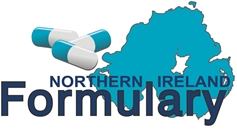Prescribing Notes
- Prescribe as per NICE NG238 Cardiovascular disease: risk assessment and reduction, including lipid modification. See also Lipid Management Pathway and Statin Intolerance Pathway adapted for Northern Ireland.
- Other statins (simvastatin, pravastatin, fluvastatin, rosuvastatin) may occasionally be used if there are tolerability issues or, under secondary care guidance, for complex lipid management.
- Simvastatin 80 mg is no longer recommended due to the risk of adverse effects. People currently taking simvastatin 80mg should be advised to contact their doctor to arrange a switch to an alternative statin, usually atorvastatin. See MHRA.
- Ezetimibe in addition to statin therapy may be considered for secondary prevention when lipids are not adequately controlled despite the maximally tolerated statin dose. Every effort should be made to reach lipid goals by statin monotherapy before considering ezetimibe.
- Ezetimibe monotherapy is only recommended as an option for patients who would otherwise be initiated on statin therapy but who are unable to do so because of contraindications to initial statin therapy, or because of intolerance of statin therapy e.g. tried at least 3 different statins.
- Do not routinely offer fibrates for the prevention of CVD.
- Do not offer omega-3 fatty acid compounds*, nicotinic acid or bile acid sequestrants (anion exchange resins) for the prevention of CVD (*Icosapent ethyl is an exception to this if used as described in NICE TA805 guidance on icosapent ethyl with statin therapy for reducing the risk of cardiovascular events in people with raised triglycerides).
- Inform patients there is no evidence that omega-3 fatty acids help to prevent CVD
- Two PCSK9 inhibitors are available (alirocumab and evolocumab) for patients who meet criteria outlined in NICE TA 393/394.
- Evolocumab is an AMBER list medicine. A GP information sheet is available on the Interface Pharmacy website.
- Alirocumab is an AMBER list medicine. A GP information sheet is available on the Interface Pharmacy website.
Cautions
- Caution should be exercised when prescribing other drugs with statins. Statins interact with many drugs including azole anti-fungals, macrolide antibiotics, HIV protease inhibitors, amiodarone, verapamil, grapefruit juice, and warfarin. See BNF for full details of drug interactions.
- Courses of antifungals may cause an increase in the drug levels of statin. The increase in drug levels occurs to different degrees depending on the drugs taken so consult the product SPC for specific advice. A dose reduction, temporary withdrawal of the statin and/or extra clinical monitoring may be required. For example, in patients taking atorvastatin, it may be appropriate to reduce to atorvastatin 10mg if itraconazole is prescribed.
- MHRA Drug Safety Update advised that there is sufficient evidence to support an association between statin use and new onset diabetes. The bulletin contains full details of this alert along with advice for healthcare professionals.
- MHRA Drug Safety Update advised that there have been some suspected (very infrequent) reports of new-onset or aggravation of pre-existing myasthenia gravis or ocular myasthenia associated with statin use. The bulletin contains full details of this alert along with advise for healthcare professionals.
